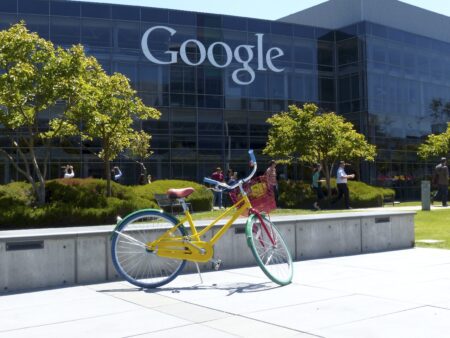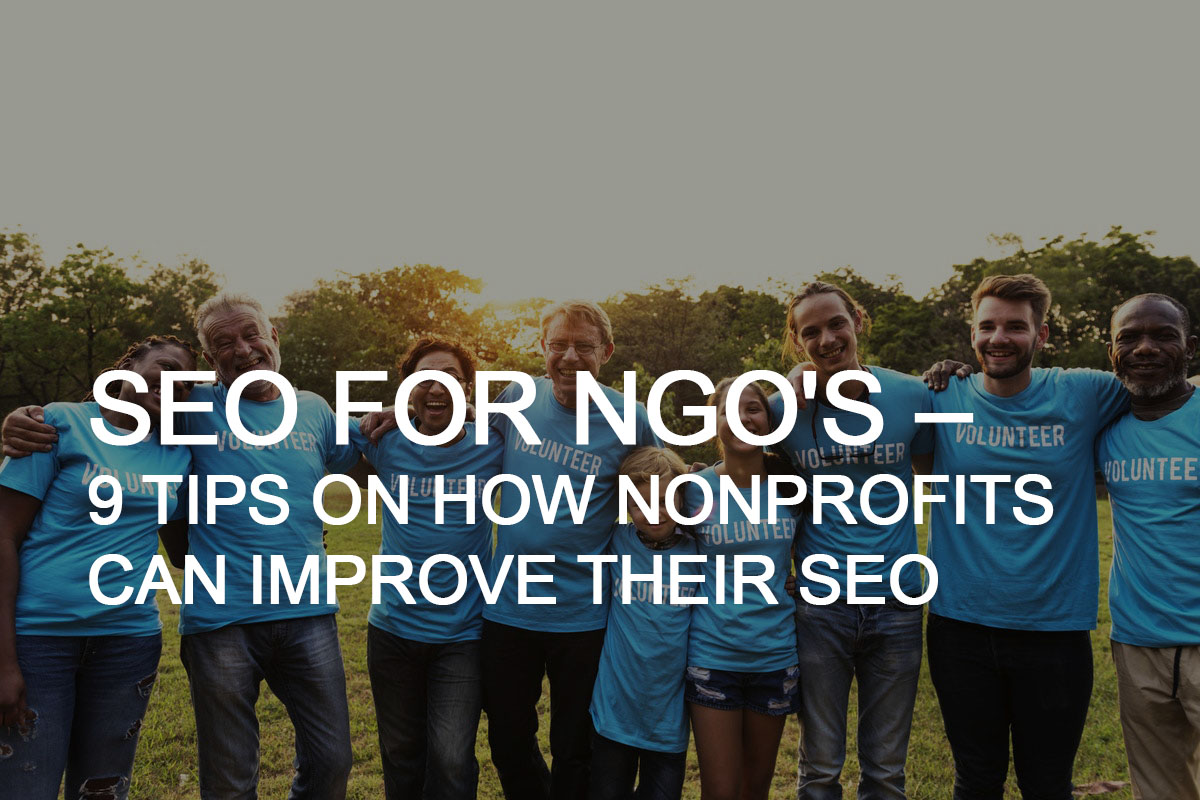Google SEO, or search engine optimization for Google, is optimizing a website to rank higher and earn more relevant traffic in Google search results. It involves implementing various techniques and strategies to improve a website’s visibility and credibility in search engines’ eyes, with the ultimate goal of driving qualified traffic to a website and achieving marketing goals. SEO is an integral part of online marketing, as it helps businesses and website owners to reach their target audience and achieve their business objectives. By implementing effective SEO techniques and tracking their performance, businesses and website owners can improve their chances of ranking well in search results and attracting qualified website traffic.
The introduction to Google SEO
Defined as Google SEO
Google SEO, or search engine optimization, is the process of improving the ranking of a website on Google’s search engine results pages (SERPs). The goal of Google SEO is to increase the visibility and accessibility of a website by making it more attractive to search engines, which can drive more organic traffic to the site.
To achieve this, Google SEO involves a range of strategies designed to boost a website’s relevance, authority, and usability. These methods include on-page optimization (such as making sure that content on a site is well-written and relevant) and off-page optimization (such as building backlinks to other trustworthy websites), as well as local SEO (optimizing sites for specific areas ).
In general, Google SEO aims to assist websites to be more prominent in Google search results and attract more targeted traffic from those looking for specific phrases or keywords relevant to the website’s product or content.
What’s the importance of Google SEO for companies and owners of websites?
Google SEO has become essential for both website owners and businesses because of several reasons:
- Increased visibility: A greater position in Google results could increase website exposure. This leads to more organic traffic to the website, leading to greater brand awareness and sales.
- Improved user experience: Google SEO helps to improve the accessibility of websites and improve your user experience. If a site is simple to navigate and contains pertinent, valuable information, visitors stay on the website longer and return later. This could lead to greater participation and more conversions.
- Cost-effective marketing: Google SEO is a cost-effective marketing method since it targets people who are actively seeking items or services that the company offers. Businesses can draw qualified leads and clients who are already curious about what they can provide instead of relying on traditional marketing methods like cold calling or promoting to a broader market.
- Competitive advantage: Many businesses compete for the same keywords and phrases in Google search results; By investing in Google SEO, businesses can gain a competitive advantage by ranking higher in search results and attracting more qualified traffic.
Google SEO is an essential element of a complete digital marketing strategy for companies and owners of websites. It can help improve a website’s visibility, usability, and credibility, which can ultimately lead to increased traffic, engagement, and conversions.
How Google Search Works

Understanding the Google algorithm and ranking factors
Google uses a complex algorithm to determine the ranking of websites in its search results. The exact details of the algorithm are not publicly disclosed, but it is known to consider hundreds of different ranking factors when determining the relevance and importance of a website.
Some of the most important ranking elements that Google’s algorithm evaluates comprise:
- Keywords: Using relevant keywords in a website’s content can help to signal to Google that the website is relevant to a particular search query. However, keyword stuffing (the practice of using excessive keywords to manipulate search rankings) is discouraged and can harm a website’s ranking.
- Content Quality: Google values high-quality, useful, and relevant content. Websites that provide valuable information to users are more likely to rank well in search results.
- User experience: Google wants to provide the best possible user experience, so it takes into account factors such as the loading speed of a website, the design and layout of the site, and the presence of broken links or error pages.
- Backlinks: Google views backlinks (links from other websites to a particular website) as a sign of the credibility and authority of a website. Websites with a high number of high-quality backlinks are more likely to rank well in search results.
Alongside these major ranking factors, Google constantly updates their algorithms to deal with low-quality or spammy sites that attempt to manipulate rankings using unethical methods like link schemes and keyword stuffing. These updates, referred to as “quality updates,” are intended to improve the quality of the search results by penalizing websites that don’t adhere to Google’s rules.
Google’s algorithms aim to give users accurate and beneficial results for their searches while ensuring the most enjoyable user experience. By producing quality content and delivering an enjoyable user experience, businesses and site owners increase the likelihood of being well-ranked on Google outcomes.
The role of keywords in Google search
Keywords play an important function for keywords in Google Search and SEO. When a person searches Google, the search engine uses algorithms to analyze the contents of websites and identify which sites are best suited to the search inquiry. One way that Google accomplishes this is to search for keywords that are relevant to the search query.
For businesses and website owners, using relevant keywords in their website’s content can help to improve its visibility in Google search results. Including keywords related to the products or services, the business offers can increase the chances that the website will be shown to users searching for those specific terms.
However, it’s important to note that keyword stuffing (the practice of using excessive keywords to manipulate search rankings) is discouraged by Google and can actually harm a website’s ranking. It’s important to use keywords naturally and in moderation to provide a good user experience and avoid being penalized by Google.
As a general rule, we want to see the target keyword in the introduction and conclusion paragraphs, with an approximate keyword density of no more than 2%. This information was once in the Google Digital Marketing Fundamentals course but was later removed. We can speculate that this gave too much information to users.
Overall, the role of keywords in Google search is to help the search engine understand the content of a website and match it to relevant search queries. By using relevant keywords in a website’s content, businesses and website owners can improve their site’s visibility in Google search results and attract more qualified traffic. Regarding Google SEO, it’s essential to strike a balance and use keywords strategically while providing valuable and informative content for users.
On-Page SEO Techniques
On-page SEO refers to optimizing individual web pages to rank higher and earn more relevant traffic in search engines.
One of the key on-page SEO techniques is the use of title tags and meta descriptions.
Title tags are the text that appears in the tab of a web browser and at the top of a search engine results page (SERP). They are used to tell users and search engines what a particular page is about. Meta descriptions are short summaries of a page’s content that appear under the title tag on the SERP. They are intended to give users a brief overview of what a page is about and encourage them to click through to the website.
Both title tags and meta descriptions are important for Google SEO because they help to inform search engines about the content of a webpage and can affect its ranking in search results. They also play a role in the user experience, as they help users understand what a page is about and decide whether or not to click through to the site.
It’s important to ensure that your title tags and meta descriptions are relevant, concise, and descriptive. Google may rewrite or adjust your title tags and meta descriptions to better match your page’s content or the user’s search query. This is why it’s important to be as relevant and specific as possible when crafting your title tags and meta descriptions rather than using vague or misleading language.
Title tags and meta descriptions are important on-page SEO techniques that can help improve a website’s visibility and credibility in Google search results. By crafting compelling and relevant title tags and meta descriptions, businesses and website owners can encourage users to click through to their site and improve their chances of ranking well in search results.
Headings and subheadings
Headings and subheadings are essential SEO techniques on the page that assist in improving the readability and structure of a page. They also help search engines understand a website’s content and evaluate the relevance of a specific search question.
Headings and subheadings are used to categorize and organize the content of web pages into sections and sub-sections. They are typically indicated by different heading levels (such as H1, H2, H3, etc.) and are used to break up the content of a page into digestible chunks for users.
When it comes to SEO, it’s crucial to make use of headings and subheadings to indicate the order of the information on a webpage and assist search engines in comprehending the primary topics and subtopics discussed. It’s also an excellent idea to incorporate relevant keywords into headings and subheadings since it can increase the relevancy of a website to a specific search question.
It’s also important to ensure that a page’s title tag and main heading (H1) are closely related. This helps to ensure consistency between the title that appears in the search results and the content of the page, which can improve the credibility of the website and the likelihood of users clicking through to the site.
Headings and subheadings are essential SEO strategies that help enhance the readability and structure of websites and their relevancy in search results. By using headers and subheaders efficiently and including relevant keywords, website owners can boost the likelihood of their site being highly ranked in Google results for search.
Internal linking
Internal linking is an important aspect of on-page optimization that involves linking to other pages within the same website. Internal linking has a few key benefits for Google SEO:
- It helps search engines better understand the structure and hierarchy of a website: By linking to other pages within the same website, you can help search engines to understand the relationship between different pages and their relative importance.
- It improves the user experience: Internal linking is a way to direct users to different pages on your website, encouraging them to visit more of your website’s content and increasing their interaction with your site.
- It can help to distribute link equity: Link equity, also known as link juice, is a measure of the value a link passes on to the page it is linking to. By internally linking to other pages on your website, you can distribute link equity more evenly, which can help to improve the ranking of those pages in search results.
To effectively implement internal linking for SEO, it’s important to:
- Link to relevant and high-quality pages: Only link to pages relevant to the content you are linking to and that provide value to users.
- Use descriptive and relevant anchor text: Anchor text is the visible text that is hyperlinked. Use descriptive and relevant anchor text to help search engines understand the context and content of the page you are linking to.
- Use a mix of generic and specific anchor text: While it’s important to use descriptive anchor text, it’s also a good idea to use a combination of generic and specific anchor text to help diversify your internal linking strategy.
Image optimization
Image optimization is an important aspect of on-page SEO, as it can help to improve the loading speed and user experience of a webpage. Google’s algorithm considers the loading speed of a webpage as a ranking factor, so optimizing images can help improve a website’s ranking in search results.
There are several key actions you can take to improve the SEO of your images:
- Use descriptive and relevant file names: Instead of generic file names like “image1.jpg,” use descriptive and relevant names for your files containing relevant keywords. For instance, “red-flowers.jpg” is a more descriptive and SEO-friendly name than “image1.jpg. “
- Compress images: High-resolution, large images could slow down the loading speed of websites. Use tools for compressing images to minimize the size of files without losing quality.
- Use appropriate image file types: Different image file types have different sizes and quality characteristics. Use the proper file type for the kind of image you are using. For example, JPEG is a good choice for photographs, while PNG is better for images with text or graphics.
- Use alt text Alt: Alt text is a brief description of an image that is displayed if the image cannot be displayed for any reason. Search engines also use it to understand the content of an image. Use descriptive, relevant alt text to help search engines understand the content of your images and improve their visibility in search results. Alt text is also used for accessibility. Should someone that is visually impaired use a screen reader, the screen reader would read the alt text of that image.
In general, image optimization is an essential aspect of SEO on-page which can increase the speed of loading and the user experience on a website.
Off-Page SEO Techniques
Off-page SEO refers to the optimization of a website’s visibility and credibility through methods that occur outside of the website itself.
Building backlinks
An important technique for off-page SEO is the creation of backlinks. These are hyperlinks on different websites that connect to your website.
Backlinks are crucial to Google SEO because they are a reassurance of a site’s credibility and quality. Google considers websites with the highest number of high-quality backlinks as being more reliable and reliable, which is why it is more likely to rank these sites higher in the search results.
It’s also important to remember that Google removes approximately 25 billion spam websites from its index each day. Therefore, it’s essential to build quality backlinks instead of trying to manipulate the system by creating low-quality or untrustworthy links. The best ways to make high-quality backlinks are:
- Creating valuable, informative content that other websites will want to link to
- Participating in guest blogging or contributing to relevant industry websites
- Earning media mentions or coverage in industry publications
- Building relationships with influencers and industry experts who may be willing to link to your website
Guest blogging
Guest blogging, also known as blogger outreach or content marketing, is an off-page SEO technique that involves creating and publishing content on other websites to build backlinks and improve the visibility and credibility of a website in search results.
To be effective, it’s essential to focus on guest blogging on highly relevant websites related to your business or niche. For example, if you are a flower shop, you would want to guest blog on websites about flowers or gardening rather than unrelated topics. This helps to ensure that the content you create is relevant to the website’s audience and that the backlinks you earn are high-quality and credible.
It’s also a good idea to focus on guest blogging on websites with a high Domain Rating (DR), which measures the quality and authority of a website. A DR of 20 or higher is generally good, and it can be an indicator of a website’s trustworthiness and credibility.
Blogger outreach is an effective off-page SEO technique that can help to improve the visibility and credibility of a website in Google search results.
Businesses and website owners can build high-quality backlinks and attract qualified traffic to their websites by focusing on guest blogging on highly relevant websites with a high DR.
Note: Domain Rating is not an official metric used by Google or search engines. It’s an indicator made by Ahrefs. We also look at other factors when it comes to picking a page to guest post on.
Local SEO Techniques

Local SEO is a type of Google SEO that focuses on optimizing a website for local search queries and improving the online visibility of a business in a specific geographic location. One crucial local SEO technique is setting up a Google My Business listing.
Google Business Profile listing
Google Business Profile is a free tool that allows businesses to manage their online presence across Google, including in search results and on Google Maps. By setting up a Google Business Profile, companies can provide information about their location, hours, contact details, and products or services to potential customers.
To create a Google Business Profile listing, companies will have to set up a Google account and confirm the location of their business. This usually involves receiving a postcard through the mail, with verification codes or checking via email or phone. After a company is verified, it can add details to its listing, including its address, telephone number, web address and opening hours.
A Google Business Profile profile is essential for local SEO because it helps increase the visibility and credibility of a business’s presence on Google search results and the search results on Google Maps. This also allows companies to engage with their customers by responding to reviews or answering questions.
Making a Google Business Profile is an essential local SEO strategy that could aid in improving the credibility and visibility on the internet of a business’s presence within a particular geographic area. By establishing a Google Business Profile listing and ensuring that the information is up-to-date, companies can increase their chances of being highly ranked on local results and attract qualified local customers.
Local citations and directory listings
Local citations and directory listings are another important local SEO technique. Local citations mention a business’s name, address, and phone number (NAP) on other websites, such as online directories or industry-specific websites. Directory listings are listings of a business in online directories or local business directories.
Local citations and directory listings are crucial for local SEO as they can increase the visibility online and trustworthiness of a company within a particular geographic area. If a business’s NAP is frequently found on different websites, it helps increase its chances of ranking highly on local results and attracting qualified local visitors.
However, it’s important to be selective about which local citations and directory listings to add. Google guidelines discourage the use of low-quality or spammy citations and directory listings, as they can harm a business’s ranking in search results. It’s important to only add local citations and directory listings that are relevant and local to your business and to avoid overloading your website with too many irrelevant or low-quality citations.
Reviews and ratings

Reviews and ratings are an important local SEO technique for businesses with a Google Business Profile. Google takes into account the number and quality of reviews and ratings when determining the ranking of a business in local search results.
Having a high number of positive reviews and ratings can help to improve the credibility and trustworthiness of a business in the eyes of potential customers. It can also help to increase the chances of a business ranking well in local search results.
There are a few ways that businesses can encourage customers to leave reviews and ratings for their Google Business Profile:
- Make it easy for customers to leave reviews: Provide clear instructions on how to leave a review, such as by including a link to your Google My Business listing in your email signature or on your website.
- Respond to reviews: Show your appreciation for customer feedback by thanking customers for their reviews and addressing any negative reviews in a professional and helpful manner.
- Ask for reviews: While it’s important not to overly solicit reviews, it can be helpful to gently remind satisfied customers to leave a review for your business.
Tracking and Measuring Your Google SEO Performance

Using tools like Google Analytics and Search Console
Tracking and measuring your Google SEO performance is integral to any SEO strategy. Some key tools can help you do this, including Google Analytics and Google Search Console.
Google Analytics is a free web analytics service that provides insights into website traffic and user behaviour. It allows you to track the number of visitors to your website, the pages they visit, and their traffic sources. It also provides detailed information about user demographics, such as age, gender, and location.
Google Search Console is a free tool that provides insights into a website’s performance in Google search results. It allows you to track the keywords driving traffic to your website, see which pages are ranking well in search results, and identify any technical issues affecting your website’s performance. It also provides information about the backlinks pointing to your website and any manual actions taken by Google.
While both Google Analytics and Google Search Console are valuable tools for tracking and measuring SEO performance, they have different strengths and focus on different aspects of a website’s performance. Google Analytics focuses more on website traffic and user behaviour, while Google Search Console focuses more on a website’s performance in search results and technical issues.
Conclusion
In conclusion, Google SEO is an essential aspect of online marketing that involves optimizing a website to rank higher and earn more relevant traffic in search results. It plays a crucial role in helping businesses and website owners to reach their target audience and achieve their marketing goals.
Several key techniques are essential for Google SEO, including on-page optimization, off-page optimization, and local SEO. On-page optimization involves optimizing the content and structure of a website to improve its relevance and credibility in the eyes of search engines. Off-page optimization consists of building backlinks and earning mentions on other websites to enhance the visibility and credibility of a website in search results. Local SEO involves optimizing a website for local search queries and improving the online visibility of a business in a specific geographic location.
Tracking and measuring your Google SEO performance is integral to any SEO strategy. Several tools, such as Google Analytics and Google Search Console, can help you track your website’s performance and identify areas for improvement.
The importance of ongoing, consistent SEO efforts cannot be underestimated. In today’s competitive online environment, businesses and website owners must stay up-to-date with the latest SEO trends and best practices to stay competitive in Google search results. By implementing effective SEO techniques and tracking their performance, businesses and website owners can improve their chances of ranking well in search results and attracting qualified website traffic.
If you’re looking for help with your Google SEO efforts, Snap SEO can help. Our team of experienced SEO professionals can provide a customized SEO roadmap and help you implement effective SEO techniques to improve your website’s visibility and credibility in search results. Contact us today for a free SEO roadmap and to get started on your SEO journey. Let our team help you reach your marketing goals and achieve success online.





